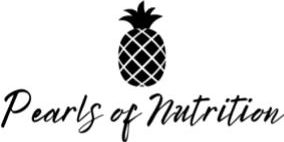Time to get nerdy. Table salt is sodium chloride, about 40% is sodium and 60% is chloride. Sodium conducts electrical impulses so if you want your heart to beat and your cells to function it’s a good thing to have. Sodium also really likes water. They have been bros forever. This is where the idea for sodium restriction comes in. Because sodium attracts water it can contribute to an increase in the volume of blood circulating in your body which then increases your blood pressure. High blood pressure increases your risk for stroke, cardiovascular disease, blah blah blah things that suck. So far it looks like a sodium restriction is a smart idea. Except, like I have said before, not everyone is the same. Black individuals are more salt sensitive than whites. This article states only 29% of white individuals and 36% of blacks who do not have hypertension (high blood pressure) are actually salt sensitive. Um, excuse me? So our major health organizations are telling 100% of the population we have to eat this teensy tiny bit of salt when less than a third of normotensive individuals would benefit from it? Biatch, please. Ain’t nobody got time for bland food.
On top of that, this study shows that a low sodium diet actually increased triglycerides which definitely isn’t going to help you avoid cardiovascular disease. The Institute of Medicine (IOM) just released the report- Sodium Intake in Populations: Assessment of Evidence in 2013. This shit is hot off the press, you’re welcome. They discuss how research isn’t exactly clear on what the appropriate recommendation of sodium should be. How is that possible, you ask? The reason we as a population consume SO much sodium these days is because, as you know, processed and packaged food is high in sodium. So when you get people to remove the sodium from the diet they simultaneously remove the processed junk making it difficult to determine if it is the lack of sodium or the lack of crap that is actually improving blood pressure. The IOM concluded “the committee determined that evidence from studies on direct health outcomes is inconsistent and insufficient to conclude that lowering sodium intakes below 2,300 mg per day either increases or decreases risk of CVD outcomes (including stroke and CVD mortality) or all-cause mortality in the general U.S. population” (pg. 122). AKA we know this restriction is unnecessary. Whoop whoop!
That being said, there are some individuals who do need to be cautious about sodium intake. Individuals who already to have hypertension should be cautious as 56% of hypertensive whites and 73% of hypertensive blacks are salt sensitive. Salt sensitivity increases with age and those with impaired renal function should check with their registered dietitian to see if sodium restriction is necessary based on the progression of the disease [2].
Let’s talk eating. If the only way I can get you to eat Brussels sprouts is if you put a 1/2 tablespoon of butter and a couple shakes of salt on ’em I say do it. Don’t get carried away. But if you are cooking REAL, WHOLE FOODS and your recipe calls for some salt go ahead and add it. When you eat real foods you don’t need as much anyway. I know a good nutritionist would tell you to read labels too but really I want you buying foods that don’t have labels on them and cooking yourself. Moral of the story- you can put the salt shaker back on the table if you cut out the processed junk you’re buying right now.
Next up, bone broth. For now go to the top right corner of the page and put your email address in the box and click subscribe. Kbye!

